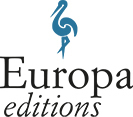@font-face {
font-family: "Cambria";
}@font-face {
font-family: "Garamond";
}p.MsoNormal, li.MsoNormal, div.MsoNormal { margin: 0in 0in 0.0001pt; font-size: 12pt; font-family: "Times New Roman"; }div.Section1 { page: Section1; }
Art-Cinema Icon Anne Wiazemsky Tells Her Mother's Story in My Berlin Child
by Michael Joshua Rowin
My Berlin Child
By Anne Wiazemsky,
Trans. Alison Anderson
Europa Editions
A minor icon of mid-to-late-60s European art cinema, Anne Wiazemsky is best known as the teenage star of Robert Bresson's masterpiece Au hasard Balthazarand as the wife-muse of Jean-Luc Godard's Dziga Vertov period. Since the mid-80s Wiazemsky has left the screen to pursue writing; My Berlin Child is her latest novel and surprisingly the first to be translated into English. One would think that Jeune fille, based on her life on the set of Balthazar, would have been interesting enough to American readers to have earned that distinction,
but there you go.
My Berlin Child is autobiographical, though in a different sense. Writing in an urgent present tense and threading artless diary entries and letters throughout a succinct narrative, Wiazemsky has composed a fictionalized portrait of her late mother Claire as a young, migraine-afflicted woman working for the French Red Cross during the last years and aftermath of World War II. Claire is also the daughter of Nobel laureate François Mauriac, and in part gravitates toward the dangerous yet noble tasks demanded by her occupation for the chance to merge into a tight, selfless community
unconcerned with pedigree.
My Berlin Child achieves poignancy as a coming of age tale, Claire's initial romantic immaturity deepening amidst the horrific misery of Berlin, her post-Armistice worksite. After finally breaking off an engagement to which she has long grown cold, Claire meets Yvan, a French officer of the royal Russian Wiazemsky line. We of course know the result of their mutual attraction (and who the infant of the title just might be), but what's important here is how Wiazemsky finds the perfect path between familial nostalgia and universal love story in order to convey her parents' first years together with simultaneous complexity and simplicity, and thereby evocatively excavate the past.


